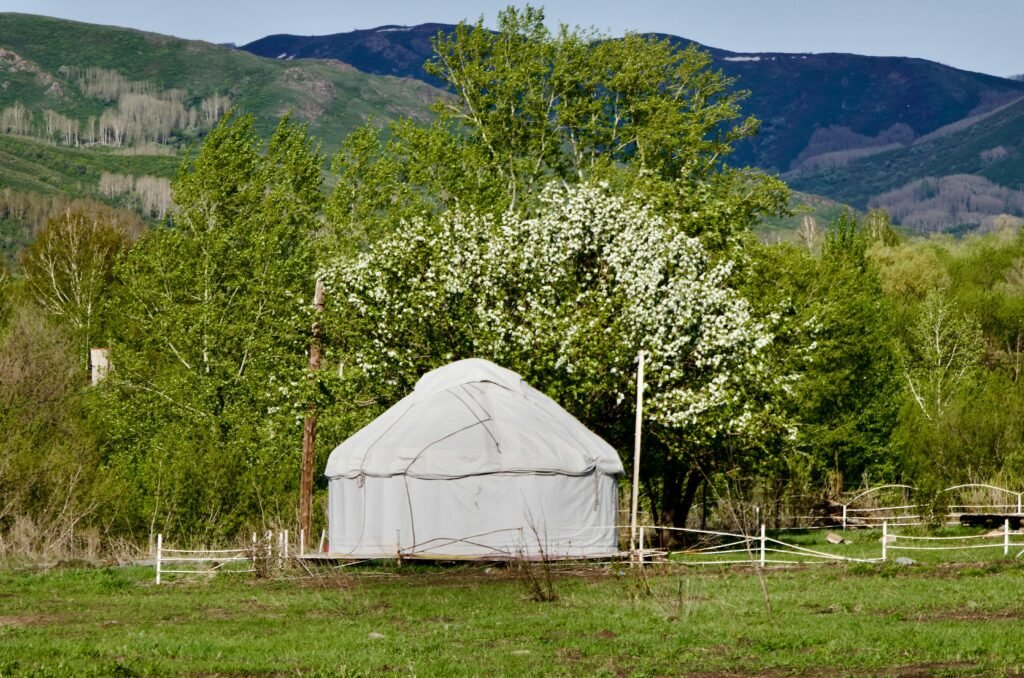Introduction to the Silk Road
The Silk Road, a historical network of trade routes that connected the East and West, holds immense significance in the annals of world history. Established during the Han Dynasty in China, this intricate web of paths facilitated the exchange of goods, ideas, culture, and technology across continents, principally linking regions such as China, Central Asia, the Middle East, and Europe. The name “Silk Road” originates from the lucrative silk trade that was a primary commodity transported along these routes, showcasing the extensive cultural and economic interplay between different civilizations.

The routes of the Silk Road varied widely, encompassing both overland roads and maritime paths, thus enabling merchants and travelers to navigate diverse terrains. Given its expanse, the Silk Road fostered remarkable interactions among diverse cultures, leading to significant contributions in various fields, including art, science, and philosophy. The movement of people and ideas facilitated by the Silk Road laid the groundwork for a shared understanding among different cultures, epitomizing how trade can bridge vast differences.
Traveling along the Silk Road offers an unparalleled opportunity to explore the vivid tapestry of human history. Backpacking this legendary route not only allows adventurers to retrace the steps of ancient traders but also serves as an enlightening experience enriched by the myriad cultures intersecting at various points. From the majestic landscapes of Central Asia to the bustling bazaars that still echo the vibrant spirit of trade, following this path is like stepping back in time, providing insights into how cultures developed and influenced one another historically. Thus, embarking on a backpacking journey through the Silk Road is not just about traversing distance, but also about discovering the profound legacies that continue to shape our world today.
Planning Your Backpacking Adventure
Planning a backpacking trip along the historic Silk Road involves several essential steps to ensure a rewarding experience. The first crucial aspect is determining the best time to travel. The ideal seasons for backpacking in Central Asia are spring (April to June) and autumn (September to October). During these periods, the weather is generally mild, making it suitable for outdoor activities and trekking.
Obtaining the necessary visas is another vital step in your preparation. Many countries along the Silk Road, such as Uzbekistan, Kyrgyzstan, and Kazakhstan, have specific visa requirements. It is advisable to check the latest regulations well in advance of your journey, as these can change. Some travelers may opt for a group visa or e-visa, which can simplify the process. Furthermore, being aware of the various entry points and border crossings is essential for smoother transitions between countries.

Selecting the right gear is fundamental for a successful backpacking adventure. Lightweight and durable equipment is highly recommended, especially if you plan on trekking through rugged terrain. A well-fitted backpack is crucial, as it allows you to carry essentials comfortably. Ensure that you include necessary clothing for varying weather conditions, a good quality sleeping bag, and a portable cooking system for convenience.
When it comes to budgeting for your journey, it is wise to account for accommodation, transportation, food, and entry fees to various attractions. Considering the low cost of living in many Central Asian countries, budget-friendly options are widely available. Additionally, incorporating health and safety considerations is imperative. Ensure that you have appropriate vaccinations and travel insurance to safeguard your journey. By taking these prudent steps, you can effectively prepare for an enriching backpacking experience along the Silk Road.
Route Overview and Highlights
The Silk Road is one of the most renowned trade routes in history, weaving together various cultures, peoples, and landscapes across Central Asia. This adventurous itinerary spans several key destinations, each steeped in rich heritage and unique attractions. Among these, Samarkand and Bukhara stand out as historical jewels, reflecting the grandeur of the Timurid Empire.
Samarkand, known for its stunning architectural marvels, offers travelers the opportunity to explore the Registan Square, an iconic public square surrounded by beautifully tiled madrasahs. The Shah-i-Zinda necropolis provides a glimpse into the artistic prowess of ancient craftsmen, showcasing intricate tile work and elaborate mausoleums. The city is often described as the cultural heart of Uzbekistan, drawing visitors with its blend of history and artistry.
Bukhara, another vital stop, is similarly rich in heritage. This ancient city boasts numerous well-preserved sites, such as the Ark Fortress, which served as the residence of Bukhara’s rulers for centuries. The historic center of Bukhara is a UNESCO World Heritage Site, and travelers can wander through its narrow winding streets, experiencing the essence of Silk Road trade commerce. The city’s bazaars, with their colorful carpets and handcrafted goods, provide an authentic shopping experience.
Further along, Tashkent represents a modern contrast to the historical cities. As Uzbekistan’s capital, it combines contemporary architecture with Soviet-era influence. Key attractions include the Khast-Imam Complex, the beautiful Chorsu Bazaar, and the Museum of Applied Arts, which showcases Uzbekistan’s rich cultural tapestry.
Lastly, Almaty, nestled in the foothills of the Tien Shan mountains in Kazakhstan, serves as an excellent endpoint for this journey. Known for its vibrant cultural scene and breathtaking natural landscapes, Almaty offers outdoor activities alongside urban exploration. The Medeu skating rink and the Shymbulak ski resort are popular among nature enthusiasts, providing multiple ways to appreciate the surrounding beauty.
Each of these destinations contributes to the overall narrative of the Silk Road, showcasing its historical importance in trade, culture, and connectivity. Exploring these cities promises a memorable adventure through a region rich in history and diverse experiences.
Cultural Experiences and Local Interactions
Traveling along the Silk Road unveils a tapestry of rich cultural experiences that transcend mere sightseeing. Exploring this historic route allows backpackers to immerse themselves in the vibrant traditions of Central Asian communities. One of the most profound ways to experience local culture is by participating in traditional festivals. Events like the Nauryz festival, celebrated in various countries such as Kazakhstan and Uzbekistan, signify the arrival of spring and involve unique rituals, folk performances, and the sharing of traditional dishes. Engaging in these festivities provides a rare opportunity to meet locals and gain insight into their customs.

The culinary landscape along the Silk Road is equally captivating. Travelers can savor an array of traditional foods that reflect the region’s diverse heritage, from plov (rice pilaf) in Uzbekistan to manty (dumplings) in Kyrgyzstan. Many believe that sharing a meal is one of the best ways to connect with local communities. Food markets are excellent places to strike up conversations with vendors who are often eager to share recipes and stories behind their dishes. Additionally, local cafes and restaurants frequently host cultural evenings where traditional music and dances are performed, allowing visitors to witness the artistic talents of the region.
Art and craftsmanship are also vital components of the Silk Road experience. Whether it is observing artisans weaving intricate carpets or potters shaping clay into beautiful ceramics, these workshops offer travelers a chance to appreciate the time-honored skills passed down through generations. Engaging locally not only enriches one’s understanding of the cultural heritage but also supports these artisans by purchasing their crafts, fostering sustainable practices.
Respectful interactions with local communities are paramount. Prior knowledge of local customs, greetings, and gestures goes a long way in fostering goodwill and creating meaningful connections. For instance, understanding the significance of hospitality in Central Asian cultures can enhance the overall experience. Travelers have shared anecdotes about the warmth and friendliness of local people, which often lead to spontaneous invitations into their homes, offering an intimate glimpse into daily life along the Silk Road.
Accommodation and Transportation Tips
When embarking on a backpacking journey along the Silk Road, selecting the right accommodation is crucial for an enjoyable experience. The region offers a diverse array of lodging options suitable for various budgets and preferences. Hostels are popular among backpackers and are often the most economical choice. They provide not only affordable bunk beds but also opportunities to meet fellow travelers. Guesthouses are another excellent option, often run by local families, offering a more intimate insight into Central Asian culture.

For those seeking something unique, traditional yurts can be found in more remote areas. Spending a night in a yurt can enhance your adventure by providing a glimpse into the nomadic lifestyle that characterizes parts of Central Asia. When planning your stay, consider booking in advance during peak travel seasons, particularly in popular destinations such as Samarkand and Bukhara, to ensure availability.
Transport is a key element of traveling through the Silk Road. Options for getting around include buses, trains, and shared taxis, each offering its own experience. Long-distance buses connect major cities and are often the most cost-effective means of transportation. Comfortable sleeper trains are also available for longer distances, providing a unique opportunity to witness the countryside unfold as you travel. In rural areas, shared taxis, known as ‘marshrutkas’, can be an efficient way to navigate between destinations while offering the flexibility to explore at your own pace.
It is advisable to familiarize yourself with local transportation schedules and booking procedures, as they can vary significantly from country to country. Depending on your travel itinerary, allocating a portion of your budget for transportation will ensure that you have a smooth journey. Always remember to consider the balance between comfort and cost to create the best travel experience along this historic route.
Adventure Activities Along the Route
Backpacking through the Silk Road presents various adventure activities that cater to thrill-seekers and nature enthusiasts alike. One of the most popular activities is hiking, which allows travelers to immerse themselves in the stunning landscapes of Central Asia. The Tien Shan mountains, often referred to as the “celestial mountains,” boast numerous trails ranging from moderate day hikes to multi-day treks that challenge even seasoned adventurers.
Trekking in the Tien Shan mountains offers a unique opportunity to experience the breathtaking vistas, including glacial lakes, vibrant alpine flora, and rugged peaks. Popular routes, such as the Ala-Archa National Park trek near Bishkek in Kyrgyzstan, are well-marked and provide varying levels of difficulty. This park is renowned for its dramatic scenery and is an excellent spot for both novice and experienced hikers. Additionally, the journey to Almaty, Kazakhstan, serves as a gateway to numerous trekking routes that wind through untouched wilderness.
For those interested in more adventurous pursuits, rock climbing and mountain biking are gaining popularity in the region. The diverse terrain and impressive cliffs of Central Asia attract climbers from around the world. Designated climbing areas present challenges for all skill levels, while local guides are available to assist in creating a safe experience. Mountain biking enthusiasts can take advantage of well-maintained paths and rough trails that showcase the natural beauty of the region, enhancing their backpacking journey.
Additionally, exploring the ancient caravanserais and historical trading posts along the Silk Road offers an engaging experience that combines adventure with cultural enrichment. With proper guidance and safety measures in place, backpackers can navigate this remarkable route while making memories that will last a lifetime. Each activity not only promotes physical well-being but also fosters a deeper connection with the rich history and vibrant landscapes of Central Asia.
Navigating Challenges While Traveling
Backpacking along the Silk Road offers a thrilling experience, but it is not without its unique challenges. Travelers may encounter obstacles such as language barriers, unfamiliar customs, and unpredictable situations that could potentially hinder their journey. Understanding these challenges is essential for facilitating a smoother adventure through this historically rich corridor.
One significant challenge is the language barrier. Many regions along the Silk Road have their own languages and dialects, which may not always be understood by English speakers or those familiar with Western languages. Investing time in learning a few basic phrases in the local language can be incredibly beneficial. Additionally, carrying a translation app on your smartphone can help bridge communication gaps when engaging with locals or navigating transportation. Being patient and utilizing non-verbal communication, such as gestures, can also enhance interactions.
Another aspect to consider is the varying customs and etiquette found in diverse cultures along the Silk Road. It is crucial to conduct research before your trip to familiarize yourself with local traditions and social norms. For example, respectful dress codes are often expected in certain areas, particularly when visiting religious sites. Understanding and respecting these customs can not only prevent misunderstandings but also enrich your travel experience as you connect more meaningfully with the local population.
Lastly, while traveling, unexpected situations can arise, such as changes in transportation schedules or alterations in weather. Maintaining a flexible mindset is key to adapting to these challenges. Instead of viewing disruptions as setbacks, consider them opportunities for spontaneity—embracing the unpredictability that often accompanies adventures. Keeping a positive attitude and approaching problems with creativity can transform potential obstacles into memorable experiences along your journey through the Silk Road.
Safety and Health Considerations
Traveling through the Silk Road, while an enriching experience, necessitates careful attention to safety and health considerations. The region, which spans several countries, each with distinct cultures and regulations, requires travelers to remain vigilant. General safety tips include remaining aware of your surroundings, safeguarding valuables, and avoiding isolated areas, particularly at night. Engaging with locals can enhance your travel experience, but it is recommended to be cautious when discussing political topics or sensitive regional issues, as these can vary greatly in acceptance across borders.
Understanding local laws and customs is also imperative for a smooth journey. In Central Asian countries, certain behaviors that may be acceptable in other parts of the world can be frowned upon or even penalized. Dress modestly, especially in religious sites, and be respectful of local traditions. For instance, in some communities, taking photographs of locals without permission can be considered disrespectful. Adherence to these customs not only ensures personal safety but also fosters goodwill and respect with the local populace.
From a health perspective, it is crucial for travelers to consult healthcare professionals regarding vaccinations before embarking on this journey. Recommended vaccinations may include hepatitis A and B, typhoid, and in some instances, rabies, depending on your itinerary and activities planned. Additionally, consider carrying a travel health kit replete with necessities such as antiseptics, pain relievers, and medications for common illnesses. It’s also advisable to have travel insurance that covers health issues abroad, ensuring access to necessary medical services in case of an emergency.
By paying close attention to your health and safety while backpacking through the Silk Road, you can significantly enhance your travel experience, allowing you to immerse yourself in the rich history and unparalleled beauty of this iconic route.
Conclusion: Embracing the Journey
Backpacking along the Silk Road is more than just a journey; it is a transformative experience that opens doors to ancient cultures, vibrant traditions, and breathtaking landscapes. Travelers who venture along this historic route often find themselves connected to a rich history that spans centuries, intersecting diverse civilizations. The essence of the Silk Road lies in its ability to foster encounters that transcend language barriers, igniting a sense of global camaraderie among backpackers from different corners of the world.
Engaging with the local communities not only enriches one’s travel experience but also broadens perspectives. Each stop along the route presents an opportunity to learn from artisans, taste unique cuisines, and participate in regional festivities. These interactions cultivate a deeper understanding of the intricacies of life in Central Asia, thus enhancing one’s overall journey. As travelers share stories and experiences with the people they meet, they often discover that their own narratives are woven into the larger tapestry of human experience.
Furthermore, embracing the unexpected is a hallmark of the backpacking journey. Whether it’s getting lost in bustling bazaars or discovering hidden natural wonders, the unplanned moments frequently become the most cherished memories. For aspiring backpackers, it is essential to approach this adventure with an open mind and a willingness to adapt. This journey invites individuals not only to explore geographically but also to delve into the ethos of the Silk Road, becoming part of an ongoing story that continues to evolve.
Ultimately, the call to backpack the Silk Road is both an invitation and a challenge, urging individuals to step beyond their comfort zones. The transformative nature of this adventure fosters a profound appreciation for the world’s diversity, ensuring that every experience along the way resonates long after the journey has ended. As you plan your own expedition, remember to embrace every moment; the journey has the power to change not just the way you see the world, but also how you see yourself within it.



